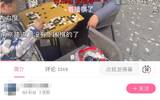Why does the extracted espresso have grounds? What went wrong with espresso making?
Recently, with the sudden drop in temperature, customers who come to the store for coffee have chosen to drink hot ones. After tasting the hot American style, a guest recalled that after drinking the hot American style, there were some small particles at the bottom of the cup, so he asked the street, "are those coffee grounds left at the bottom of the cup?" why have I never seen it when I drink ice? "
(the photo is for reference only for association.)
In this regard, today Qianjie will talk to you about why there is powder at the bottom of the espresso cup, and what can be done to reduce the occurrence of this situation.
Is it normal to have coffee grounds at the bottom of the cup?
These black powder particles precipitated at the bottom of the cup are actually very fine powders that fall into the cup along with hot water during extraction and concentration. It's the same reason that soybean dregs are precipitated in soybean milk and pulp is found in Fresh Juice.
In general, the existence of trace amounts of ultra-fine powder particles in the concentrate is a normal phenomenon. If you don't taste espresso directly, you won't even feel it; it's even harder to find after adding a certain percentage of water or milk to make other espresso drinks, so a very small amount of very fine powder won't affect the taste of the coffee.
But when you observe with the naked eye that there are obvious black particles mixed in the coffee, it means that there is an "unusual" amount of powder, which is most likely due to a problem at some point in the extraction.
Where do these fine powders come from?
You know, Italian coffee powder needs to be ground to the touch of fine sand, with a particle size range of about 200 microns and 300 microns. The fine powder we often talk about is produced by the rupture of coffee beans when they are cut and extruded, which is smaller than the target particle size we need, and because of the existence of static electricity, it will be adsorbed on the coffee powder, so this kind of fine powder can not be completely avoided in the step of grinding. Just like when we break a coffee bean, it will scatter a little powder more or less. In some commercial grade bean grinders, the particle size is more uniform, which can reduce the trouble of fine powder to a certain extent.
The powder bowl used in Italian extraction is a mesh composed of fine holes as a filter. if the powder bowl is raised toward the light source, the light passing through the mesh is the size of the aperture. When we put the coffee powder into the powder bowl buckle and the brewing handle begins to extract, the fine powder particles smaller than the fine hole will fall into the coffee under the washing of high-pressure hot water. These fine powders brought out with the coffee liquid usually do not sink to the bottom of the cup immediately, but usually settle at the bottom of the cup after standing for a few minutes.
Back to the question of the guest, Qianjie used a short white coffee cup when producing the hot American style, and of course you will see some fine powder deposited at the bottom of the cup from top to bottom, while iced American coffee uses a tall glass and provides straws, which are usually drunk from the bottom up, so it is not without fine coffee powder at the bottom of the cup when drinking iced American coffee.
Of course, in addition to grinding, some details that are not noticed before and after extraction can also lead to unusual coffee powder. For example, the cooking head buckle is not cleaned, but also residual powder residue and so on, it is possible to make unusual coffee grounds in the cup.
How can this be avoided?
1. First of all, check whether it is caused by technical problems. If so, you should pay attention to the habit of washing the head and handle at any time to avoid coffee contamination and ensure hygiene problems at the same time.
2. The powder bowl is affected by the extraction of high temperature and high pressure for a long time, which will lead to the pore diameter deformation of the powder bowl and let more fine powder pass through. However, this phenomenon is not common and usually occurs only after 1-2 years of intensive use. If you want to check the powder is also simple, just point the powder bowl at the light source and observe whether these holes become larger individually. If there is, it means that the powder bowl needs to be replaced.
3. After checking the above two steps, the extracted concentrate is still precipitated at the bottom of the cup with a large amount of very fine powder residue, it is suggested to replace a better Italian bean grinder, after all, a good bean grinder can reduce a lot of extraction troubles.
4. Of course, if you can't stand this kind of fine powder settling at the bottom of the cup, filter paper may be a good choice. Filter paper can effectively isolate solids and grease and other substances, put a round filter paper on the powder bowl and then pour the coffee powder to prevent the fine powder from falling into the coffee with the water.
Qianjie tried to verify this method of padding filter paper and found that it can effectively solve the problem that fine powder falls into coffee and precipitates at the bottom of the cup. However, compared with the extraction of unpadded filter paper, the extraction speed is obviously accelerated, and the concentrated flavor is also changed. Therefore, to adopt the extraction method of superimposed filter paper, it is necessary to re-adjust the extraction parameters (grinding, powder, etc.) to stabilize the extraction.
-END-
Front Street Cafe
No. 10 Baoqian street, Yandun road, Dongshankou, Yuexiu district, Guangzhou, Guangdong province

Important Notice :
前街咖啡 FrontStreet Coffee has moved to new addredd:
FrontStreet Coffee Address: 315,Donghua East Road,GuangZhou
Tel:020 38364473
- Prev

How to make the powder bed of siphon pot coffee form a "hill"? How to use the siphon kettle? What are the extraction parameters?
When surfing the Internet in Qianjie, you can always see such a sentence: at the end of making siphon coffee (siphon pot coffee), if there is a small hilly pink bed, it means that this cup of coffee will taste better. But often, the powder bed after cooking is in a "plain" state, so many friends will be in the front street.
- Next

Forced to become a go hall! Starbucks made two requests..
▲ Click to follow | Daily boutique Coffee Culture Magazine Coffee Workshop recently, a report entitled "A Starbucks has become a stronghold of go fans" has attracted attention on the Internet. Earlier, some netizens posted a video on bilibili saying that a Starbucks in Shanghai had become a paradise for go lovers, surrounded by chess friends inside and outside the store.
Related
- What effect does Italian American coffee with filter paper have? Will coffee taste better if it is put on filter paper at the bottom of the powder bowl?
- What is the color difference in coffee beans? What are the characteristics of honey processed coffee beans? Why are the anaerobically treated coffee beans uneven in color?
- How does novice Xiaobai quickly get started and make coffee? Newbies learn to make coffee by hand and share the specific steps and process process!
- Costa tea has a shelf life of 100 years?! Expert: Unable to verify
- It's a huge uproar! American milk addition was rejected by Manner employees?!
- Mocha pot coffee bean recommendations| How fine and how much powder should be used for grinding? What parameter ratios do I need to use to make milk with Mocha pot coffee?
- What are the characteristics of the world's top ten coffee beans treated with Costa Rica honey? How to make black honey kadura from Tarazhu Pilon Processing Plant taste good?
- How to make deep-roasted coffee? What grinding water temperature does authentic Jamaica Blue Mountain No. 1 coffee use to brew it well?
- Selected high-grade rose summer coffee flavor tasting guide Why Panama rose summer has the aroma of flowers and fruits
- What equipment does a novice Xiaobai need to buy to learn to make coffee? Filter cup electronic scale bean grinder manual flushing pot purchase guide

